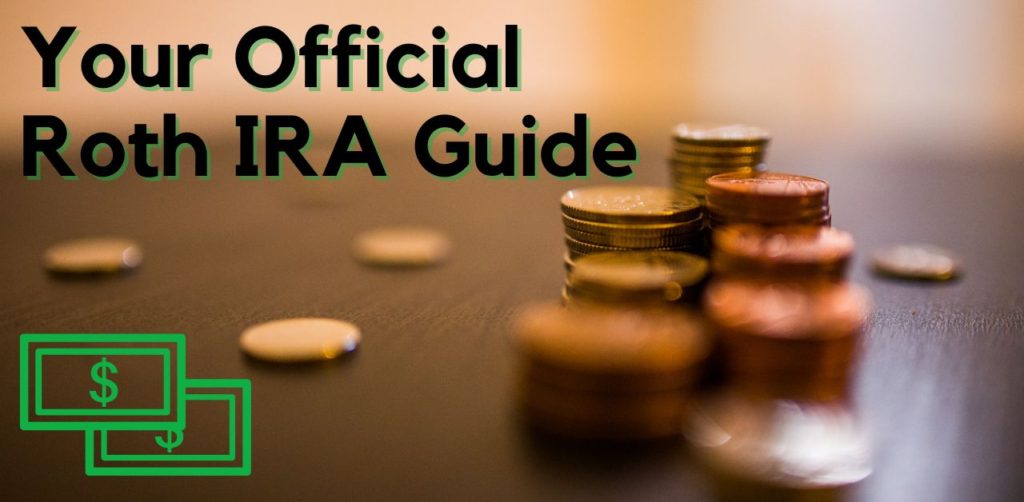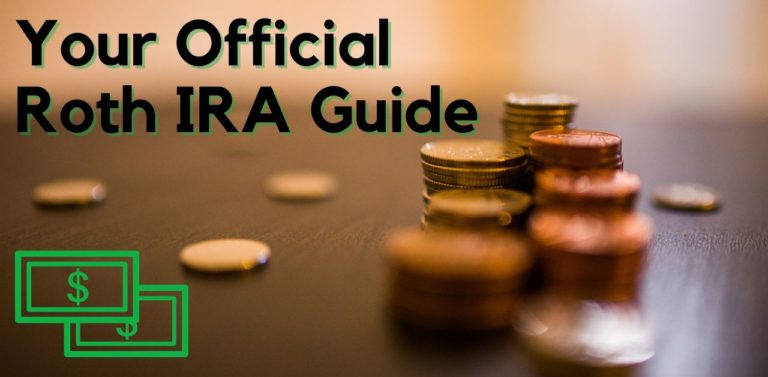Table of Contents
Introduction
When I browsed on Google for HSA content, I became somewhat shocked. I asked myself, how come one of the most beneficial accounts that exists has little media coverage compared to the 401(k)’s, IRA’s, taxable investment accounts, and a few other accounts out there?
My mission in this blog post is to help you learn more about the HSA account, so that if you do decide to utilize it, you can enjoy the benefits sooner rather than later.
Before we jump into the details, to provide you some perspective, according to the 2017 health data from the OECD Health Statistics database and the National Health Expenditure Accounts, health spending per person in the USA was $10,224 in 2017, 28% greater than Switzerland who had the second highest medical costs in the world of $8,009 per person.
The U.S spent almost 3.5 trillion on healthcare in 2017 alone. The prevalence and growth of healthcare costs make HSA’s an invaluable resource.
What is an HSA?
An HSA is a health savings account, and it is the most advantageous to use to when it comes to saving for medical expenses. According to the IRS, an HSA account can be funded from the individual who is eligible for the account as well as an employer, family member, or any other person on behalf of an eligible individual.

You can also utilize an HSA to pay for the medical expenses of a family member or spouse (qualifying relatives or dependent children). Even if these individuals are not covered by your HDHP, you can still pay their expenses using your HSA funds.
How do I Know I’m Eligible for an HSA?
There is not a large barrier to entry for this account. All that is required includes the following: You are covered under a high deductible health plan (HDHP) on the first day of the month. Additionally, you are qualified for the entire year if you are eligible on the first day of the of the last month of your tax year, which is usually December 1st.
It is also important to note that you are qualified even when your spouse does not have HDHP family coverage, assuming that your spouse’s coverage does not cover you. The IRS has an additional exception that is essential to know, you are also eligible when receiving medical services or hospital care under any law administered by the Secretary of Veterans Affairs for a service-connected disability.
A joint HSA does not exist. If both you and your spouse are qualified individuals who want to open an HSA, two separate accounts would need to be opened. If a person claims you as their dependent on their tax return, you will be unable to start or contribute to an HSA.
Requirements for a HDHP
In 2020, the minimum threshold for considering a health plan to be a HDHP is any plan with a deductible of at least $1,400 for an individual and $2,800 for a family. Total annualized out-of-pocket expenses cannot exceed more than $6,900 for an individual or $13,800 for a family (this limit is not applicable to out-of-network services).
Before signing up for a HDHP, I would read and attain a solid understanding of the rules of the plan. HDHP’s do lower your monthly premiums, but make sure that you or your family are able to cover the entire cost of the deductible if an emergency were to occur.
If you do not have the money set aside or your monthly cash flow is insufficient to cover the deductible, a HDHP may not be the right choice of health plan. This is especially true if you or someone in your family are more susceptible to doctor or hospital visits.
How Much can I Contribute to my HSA on an Annual Basis?
The annualized maximum contribution amount depends on a few conditions including your age, the date in which you became eligible, and the type of HDHP coverage that you have. In 2020, the cap for individual based HDHP coverage is $3,550. If you are under a family HDHP plan, your maximum contribution is bumped up to $7,100.
For people who are aged 55 or older by the end of the tax year, the contribution amount is increased by $1,000. If a married couple aged 55 or older by the end of the tax year are both eligible individuals, each spouse’s maximum contribution is increased by $1,000 or $9,100 in total for 2020.
If you make any excess contributions to your HSA, these excess funds are not deductible, and they should be included in your gross income. When the excess contribution is not included in box 1 of your form W-2, you need to report the excess as “other income” on your tax return.
Important: 13-Month Testing Window
This testing period of 13 months applies to you if you fall into any of these three categories:
- When you transfer your IRA or Roth IRA to your HSA
- When you move HRA or FSA funds to your HSA
- When you implement the last-month rule to make a whole year’s contribution (when you do not want to prorate and instead maximize your annual HSA contribution).
When you contribute to your HSA, contribution limits are calculated on a tax year or calendar basis. For instance, if you started a new job on December 13th ,2020 and the plan start date at the new job was June 1st ,2020, you would become eligible on January 1st of 2021 not December of 2020 because you were not eligible on the first of the month.
To calculate the maximum amount of contributions you can make for the year, you would simply count the number of months remaining in the plan year, which is 5 because you are eligible from January 1st through May 31st of 2021. Now, you simply take your maximum contribution depending on your circumstance and multiply it by 5/12 because you are eligible for 5 out of the 12 months of the year.
If your maximum contribution is $3,550 for the year, you would be able to contribute (5/12) * 3,550 or $1,479.17 or $295.83 per month.
Continuing with the previous example, let’s say you want to contribute the maximum amount for the year of $3,550 instead of the proration of 1,479.17. This may be possible using the last month rule, which notes that if you are eligible individual on the first day of the last month of your tax year.
In our example, you would not be able to apply the last month rule if your tax year is January 1st, 2020 through December 31st, 2020 because you were not eligible on December 31st of 2020. However, if you were eligible on November 27th, 2020, you would be able to apply the last month rule and contribute $3,550 to your HSA for 2020.
If you implement the last month rule, you must remain eligible from December 1st, 2020 through December 31st, 2021 (using our example above). This is called the testing period.
According to the IRS, if you fail to remain an eligible individual during the entirety of the testing period, for reasons other than death or becoming disabled, you will have to include in income the sum of the total contributions made to your HSA that would not have been made except for the last month rule.
This calculated amount will be subject to a 10% additional tax, which is computed on Form 8889.
I will not take away from the IRS’s thunder when it comes to calculating the amount described above, in which they provide two simple, clear, and helpful examples, with each example using a different situation to cover all bases.
Now, in regard to conditions two and three listed above, the 13-month testing window commences on the first day of the month when the transfer occurred and ends on the last day of the following 12th month. To provide you with an example, if you transferred IRA, HRA, or FSA funds on May 14, 2020, your 13-month testing window would be from May 1st, 2020 to May 31st, 2021.
What is an HSA Custodian/Administrator?
The custodian of your HSA account is any bank, credit union, brokerage, insurance company, or any other approved IRS institution that provides health savings accounts. Financial institutions that manage your HSA are referred to as HSA administrators.
These custodians or administrator’s objective is to hold your HSA assets in a secure HSA account. Keep in mind that this asset is cash. You can only contribute cash to your HSA, not any other financial instrument like stocks, bonds, mutual funds, etc.
If you (the owner of the HSA) decide you would like to invest your HSA funds, this custodian may either invest the money the way you direct them to or they will be partnered with an investment firm that will handle the investment component of the HSA.
Investment choices vary by custodian/administrator. They may have a preselected list of investments for you to choose from (limited), or you may be able to select the investments yourself (unlimited).
You have the option of opening an HSA account on your own and selecting your own custodian/administrator. This will provide you with the freedom of comparing various custodians in an effort to minimize any fees and optimize investment returns.
However, employer provided HSA accounts will typically already have a custodian selected. You may be restricted to use of this one custodian, but there are a couple of benefits of employer-provided HSA’s, which are discussed in the investing and tax benefits section.
What is the Difference Between an HSA and HRA?
Let’s start out with the primary difference between the Health Reimbursement Arrangement and HSA. The HRA is employer-owned while the HSA is employee-owned.
If you wanted to switch jobs, your HRA funds may or may not transfer with you, as this decision is at the employer’s discretion. Since an HSA is employee-owned, these funds will always stay with you. You will have the ability to transfer your HSA funds when you switch jobs.
The funds in an HRA are provided solely from the employer, so the employer has control and sets the rules for which expenses are and are not eligible for reimbursement for items like coinsurance, deductibles, and other services such as vision and dental.
HSA accounts can be contributed to by anyone, but typically arise from the employee, the employer, or both if the employer matches. HSA’s have an annual contribution limit established by the IRS while HRA contribution limits are generated by the employer.
Because an HRA account is funded by the employer, only they receive a tax deduction. With an HSA, the contributors, whether it is just the employee or the employee and employer, receive tax benefits through tax-free contributions.
With an HRA, a HDHP is not required, unlike an HSA. HRA funds are not available for use in retirement like HSA funds are. Lastly, HRA’s do not have an option for investing the balance.
For additional information regarding the differences between an HSA, HRA, and Flexible Spending Account click here.
Allowable Expenses Under an HSA
Qualified medical expenses under an HSA are typically any expenses that would qualify for the medical and dental expenses deduction found in the IRS’s publication 502. This list is rather large and includes most medical related expenses. What I would watch out for is the unqualified medical expenses which can be found starting on page 15 in the IRS publication 502.
Some excluded medical expenses include but are not limited to dancing lessons, babysitting, childcare, nursing services for a healthy child, controlled substances, diaper service, electrolysis or hair removal, flexible spending arrangements, maternity clothes, health club dues and non-prescription medicines other than insulin.
It is essential to note that any expenses incurred before your HSA is established are not considered qualified medical expenses. Ultimately, state law makes the determination as to when an HSA is established. When you rollover amounts from an Archer MSA or another HSA, the establish date of your new HSA is on the date your Archer MSA or other HSA was established.
Even if you were to use the last-month rule and you were deemed to be an eligible individual for the entire year for the determination of your contribution amount, only those costs incurred after you have established your HSA are qualified medical expenses.
Inactive HSA Accounts
If your HSA becomes inactive (incoming funds or outgoing funds) for a state specified number of years, the bank or brokerage with your HSA funds may deem them dormant or abandoned and there is a possibility that these funds may start to go through the escheatment process.
Escheatment is the process of transferring assets to the state. However, states do require financial institutions to attempt to notify an account holder before transferring the account over to the state. Even if your funds are transferred to the state for safekeeping, the owner or listed beneficiary on the account can still access the money/account by making a proper claim for it.
HSA Investment Requirements
To optimize the long-term value of this asset on your personal balance sheet, you can begin investing your HSA funds through either a list of investment options provided by your HSA administrator or through your own selection of investments depending on who you set up the account with.
The minimum account balance to begin investing will vary by the provider. Quite a few of the HSA accounts I have seen typically require you to have at least $1,000 dollars in your HSA before you can invest any amount of money above that threshold.
HSA Rollover and Transfer Process
The IRS condones each HSA account holder to rollover their HSA money to a different custodian once every 12 months while keeping the tax-advantaged status of the HSA.
During the rollover process, your custodian will transmit the money to you through a check or transfer to your designated bank account. Once you possess the funds, you are granted 60 days to deposit this money with your new HSA custodian.
If it takes you longer than 60 days to complete the deposit, then this will be considered a taxable distribution where you will be penalized and be required to pay a 20% penalty as well as ordinary income taxes on the amount you were rolling over.
In contrast to a rollover, a trustee-to-trustee transfer can occur as frequently as you’d like. You will not need to take any action to move the money, as the custodians will take the necessary steps to transfer the funds after your request and completion of the trustee-to-trustee transfer form.
There are not any taxes or penalties if these steps are done properly. A transfer process may take up to 2 to 6 weeks to complete.
Something that a lot of people may not be aware of is that that once in your lifetime, you are permitted to transfer money from your IRA to your HSA. In order to make this happen, both the IRA and HSA are required to be in your name.
A transfer from your IRA to your HSA, unlike a trustee-to-trustee transfer does count towards your annual contribution limit. This transfer can be done from either a roth IRA, traditional IRA, or from an inactive simple IRA or SEP.
If you have your HSA funds invested in stocks, bonds, ETF’s, mutual funds, index funds, etc., you can ask for an in-kind transfer. Be aware that not a lot of HSA custodians perform this kind of transfer.
If this is the case, you would need to liquidate your investments and commence the transfer process. Any realized gains, interest, or dividends from the liquidation may be taxable depending on which state you live in.
It is important to note that it is not required to be on an HDHP to rollover or transfer funds as these options are available as long as you have HSA money in your account.
Investing and Tax Benefits of an HSA
You may be asking, what makes this account so good? Is it comparable to a 401k and IRA? An HSA has a triple tax benefit. The money you contribute is pre-tax, if you decide to invest a portion of your HSA money, the gains are tax free. If you need to use this money to cover a qualified medical expense, the withdrawals to cover your medical costs are tax free.

No other account out in existence has tax benefits like the HSA. Information regarding qualified and unqualified medical expenses can be found in IRS Publication 502.
It is pivotal to know these qualified and unqualified expenses as using your HSA funds will result in a 20% penalty in addition to any taxes due. At age 65, you will be allowed to spend HSA dollars on anything without the 20% penalty, but you will be required to pay income tax on any withdrawals used for ineligible expenses as they are recognized as ordinary income.
A traditional and roth IRA & 401(k) both are all taxed at one point. Whether the money is taxed when you contribute it (roth) or when you withdraw it (traditional).
In a traditional IRA, not only are your contributions taxed at withdrawal, but your capital gains (even long-term) are taxed at your ordinary income tax rate unless you contribute to a roth IRA utilizing money that has already been taxed.
One benefit of an employer-provided HSA may include a matching system where the employer will match a portion of your contributions into the HSA. For instance, you may contribute $3,017.50 (85% of the max individual contribution under the age of 55) and your employer will match the remaining 15% or $532.50 to get you to your $3,550.
Another benefit of employer-provided HSA’s takes place when your contributions are derived from your paycheck as payroll deductions (which is usually how they are setup when you enroll in the plan). This money is contributed entirely tax free, including both income and FICA taxes.
If you did not use your employer and setup an HSA on your own, you can report contributions on form 8889 and file it with your Form 1040 return. It is essential to note that you do not have to itemize your taxes in order to deduct your HSA contributions.
Even though your contribution will be an income tax deduction, it will not reduce the amount of FICA taxes you owe.
When your HSA balance is getting sizeable, you can analyze the average return on investment of your employer HSA plan that includes the benefit derived from a reduction in your FICA taxes + the match provided by your employer and compare it against the average return of one of your other independent investment portfolios.
This process will allow you to see if it is still worth using the employer provided HSA (assuming it has a limited selection of funds to invest in) or whether you should rollover into another HSA plan that permits you to select your own investments.
Under most circumstances this is not advisable as most employer provided plans will have a wide selection of funds to choose from, in which you can find 1 or more funds that match or beat the market.
If you do decide to start your own HSA account, it is important to verify that the cash balances are FDIC insured. If you own any investments within your HSA, you should also check that your investments are SIPC insured.
When is the Perfect Opportunity to Start Contributing to an HSA
I agree with Dave Ramsey’s philosophy when it comes to figuring out when it is the right time to begin contributing to your HSA. If you have any outstanding debt outside of your mortgage, work on paying that off first.
As of December 2020, the average credit card interest rate is 16.05%. The average stock market return for a 10 year period is 9.2% derived from data spanning 140 years from Goldman Sachs. Goldman also noted that the S&P 500 returned 13.6% annually over the past 10 years.
Note that these are just averages, there have been years in the green and in the red, the market is unpredictable. Even though these average returns are nice and may exceed the interest rates attached to most of your debt, these interest rates are red, compound quickly, are easy to avoid/delay and should be paid off first.
These average returns also assume that the individual never touches their investments. To be honest, this rarely happens due to our human nature and emotions. Time in the market always beats timing the market.
However, many people have the tendency to sell investments when they think they are at their peak and miss on future green days or do not purchase investments when the market is doing poorly but underlying valuations are strong.
Over a 15-year investment horizon, 92.43% of large-cap managers, 95.13% of mid-cap managers, and 97.70% of small-cap managers failed to outperform the S&P 500 (market standard).
After all debt excluding the mortgage has been paid off, the next step would be to have 3 to 6 months of living expenses saved up in your emergency fund. I know this is just cash sitting in a high yield savings account that is most likely losing to the rate of inflation, but having this money incase of an emergency is underrated and massively important, especially if you have family members depending on you.

After these two steps are completed would be the perfect time to start contributing to your HSA and working that balance up past the investment threshold set by the HSA custodian to begin investing your HSA funds.
A Practical Example of the HSA in Action
John has recently started a new job and he decided to enroll in his HDHP provided at work. Compared to his old traditional health plan, John gets to pay $150 less per month under this new plan. However, the annual deductible for John’s plan has increased $2,300 relative to his old plan. John will be able to save $1,800 a year from his lower premiums but he will need to pay an additional $2,500 when he has an emergency with a large bill.
John decides to contribute $150 to his HSA each month through a deduction to his payroll. Let’s say that total federal, state, social security, and medicare tax deductions total to 25% of his paycheck. John’s employer matches up to $500 of his HSA contributions in a year.
From the tax benefits alone, John will save $150 x 12 = $1,800 = $1,800 * 23% = $414 on an annual basis from his contributions. Additionally, John will receive the $500 match from his company, creating $914 in savings in one year.
The $1,800 saved from lowered monthly premiums in one year plus the $914 saved above results in total savings of $2,714, which exceeds the $2,500 higher annual deductible from his HDHP. We did not factor in investment return in this scenario, but assuming a conservative 5% average rate of return, the power of compounding would enhance John’s savings more and more each year.
Sometimes things do not go as planned. If the deductible increase was larger, the company match was a quite a bit lower or did not exist, and the stock market saw an overall decrease over the course of a year, then it would’ve been a better decision to stay in his old traditional health plan with a lower deductible and higher premiums.
The point is that it is wise to perform a cost-benefit analysis given your available cash flow, the % of the company match for your HSA, and the amount of savings generated by lower premiums when switching to a HDHP.
However, no one can predict the long-term fluctuations of the stock market, so we enter it at our own risk. Having an emergency fund in place makes the HDHP much more attractive as you will not need to worry about paying the deductible in full when an emergency does happen, you will be prepared.
Staying consistent with HSA contributions, leveraging the employee match and tax savings, as well as growing the account through long-term investment will help you when you need it the most, whether it is paying the entire annual deductible or the out-of-pocket maximum for a costly medical expense.
Have you been able to effectively utilize the HSA and what is your favorite feature of the HSA? Please let me know in the comments.








